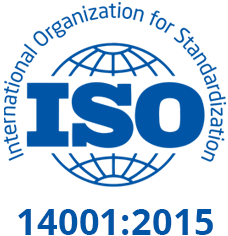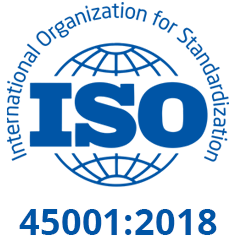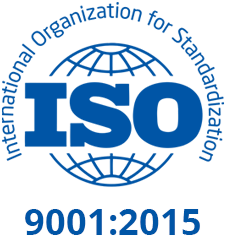Ozone information
Ozone history
- 1840 – discovered by Schönbein
- 1893 – is used as disinfectant in the drinking water
- 1906 – in Nice, France that first factory for the purification of water that uses ozone was built
- 1909 – used as an alimentary preservative for cold meat storage
- 1939 – acknowledged that prevents the increase of yeast and mould during fruit storage
- 1982 – the International Bottled Water Association (IBWA) stipulates that ozone should be used in water bottling
- starting from 1984, at all the Olympic Games the swimming pools used for contest have been cleaned with ozone.
- 2000 – approved by FDA and USDA. EPA – acceptance of disinfection by Regulation (product-DBPR)
Note: USDA – U.S. Department of Agriculture; FDA – U.S Food and Drug Administration; EPA – U.S. Environmental Protection Agency
Ozone advantages
Ozone advantages are:
- oozone is the most powerful oxidizer and disinfectant available for the treatment of aqueous solutions, gaseous mixtures and kills pathogen agents in a few seconds compared to few minutes for other oxidizers
- is partly soluble in water and enough soluble and stable, so that its oxidation or disinfection properties can be used entirely.
- after the ozone layer oxidizes or disinfects, it decomposes in oxygen
- ozone reacts with a large variety of compounds
- it can't be stored and must be generated, doesn’t oxidize because it can’t be stored
- ozone in gaseous phase is a proven deodorant for a variety of materials with a smell
- in the treatment of the drinking water, of wastewater, of waste, ozone has the proven capacity to convert organic materials in biodegradable materials.
- the application of the ozone layer on any background (liquid or gaseous) doesn’t require the addition of other chemical substances.
- it doesn't affect pH
- improves the coagulation of organic matter, improving thus filtering
Ozone advantages in combination with water
Ozone in combination with water has the advantage to remove taste or smell from the drinking water.
Again, ozone in contact with wastewater can:
- disinfect
- remove smells
- remove color
Ozone can’t be stored, therefore this needs to be generated and diluted in water on the spot, at a consumption rate.
Ozone is generated as a gas that needs to be diluted in water.
A mixting device is necessary for the ozone gas to dilute effectively in the water.
There are many variables here:
Bubble diffusers
The Bubble diffusers are the oldest and simplest method for ozone dilution in water. This is a porous gas device that is installed down to a water column in order to allow bubbles to dilute in water and to go up little by little upside the column.
The dimension of the diffuser pinholes will affect the dimension of the gas bubble. Two smaller bubbles have a bigger surface than one bubble from the same gas volume. The bigger surface will achieve an improved contact with the gas and water bubble, therefore, the ozone transfer rate in the water increases.
When choosing a Bubble diffuser it is important for this to have the smallest dimension possible of the pinholes.
Water column
The height of the water column, which has ozone, will affect very much the effectiveness of the mass ozone transfer. The diffuser must be located down the water, in this way the gas bubble must get through a bigger distance within the water column before the release in space.
The high columns will extend the period of time when the bubble is in contact with the water and can dilute in water. More important, the high columns will create a bigger pressure down the column. This high pressure will exercise a bigger transfer force.
Venturi injectors
Venturi injectors in order to function correctly, must have a difference of pressure between the entry and exit from the device. This requires a separate water pump to increase the water pressure on the entry of Venturi injector.
It is important that the exit from the Venturi injector not to be obstructed.
The ozone solubility in water depends on temperature. At low water temperatures the solubility in the water will reach bigger ozone levels. The solubility rate is maximum at low temperatures.
The water pressure will play a role in ozone solubility in water. When the ozone gas is injected in the water at high pressure, more force will fall on the wall of the gas bubble. This force will allow the ozone bubble to dilute more effectively in the water.
Any of the injection method with ozone will be more effective when the entire system is operated at a high pressure. For example, the water pressure of 35 ISP will have approximately a twice better solubility than the water pressure of 10 psi.
Ozone disadvantages
As any oxidizer, ozone has also disadvantages, that appear on abusive use:
- degrades materials.
- can affect people, pets, plants.
- oxidizes materials.
These are the three very "negative" elements..
All the oxidizers have the same "negative" effects if they are used improperly. The right application is essential to get remarkable results in your processes.
Ozone is an unstable molecule that changes rapidly back to oxygen. In the air it will decompose (it has half-life) in 20-60 minutes, according to temperature and humidity in the environmental air. The half-life period in clean water is around the same.
Note: the quality, temperature, pH and water will affect the half-life time.
Ozone can't be stored or transported, but must be generated. This requires ozone generating equipment. It would be ideal if the ozone layer could be wrapped and delivered on the spot, but it’s impossible.
Since ozone can't be stored, it's not possible to have a big volume of dangerous oxidizer, such as for chlorine or hypochlorite (this being an advantage).
Ozone properties
Ozone is one of the most powerful oxidizers in application for water and air.
Compare ozone (O3) with oxygen (O2) in the table below:
| Properties | Ozone (O3) | Oxygen (O2) |
|---|---|---|
| Molecular weight | 48 | 32 |
| Color | Blue | Colourless |
| Miros | Miros după furtună | Normal |
| Solubility in water (0 degree C) |
0.64 | 0.049 |
| Density (g/l) (g/l) | 2.144 | 1.429 |
A temperature/ minute report of ozone::
Gaseous ozone
| Temperature | Time |
|---|---|
| -50 Gr. Celsius | 3 months |
| -35 Gr. Celsius | 18 days |
| -25 Gr. Celsius | 8 days |
| 20 Gr. Celsius | 3 days |
| 120 Gr. Celsius | 1.5 hours |
| 250 Gr. Celsius | 1.5 seconds |
Ozone diluted in water
| Temperature | Time |
|---|---|
| 15 Gr. Celsius | 30 minutes |
| 20 Gr. Celsius | 20 minutes |
| 25 Gr. Celsius | 15 minutes |
| 30 Gr. Celsius | 12 minutes |
| 35 Gr. Celsius | 8 minutes |
Measurement units for ozone
ppm = parts per million
Indicates how many ozone parts are in an interval of 1 million total gas parts.
For example: 1 ppm of ozone means that 1 part of ozone is in a million of gas parts. Ppmv = indicates parts per million from a volume.
Most frequently, ozone is measured in ppm and is used to measure ozone in air and ozone diluted in water.
ppb = parts per billion
This indicates the same thing as ppm, the millions change to a billion. For example: 0,1 ppm = 100 ppb.
mg / l = milligrams per ozone litre
This is a concentration measure. This indicates how many ozone milligrams exist in a litre from the total volume. Mg / l can be used to indicate the ozone concentration in gas or liquid.
1 mg / l of ozone = 1 ppm of ozone in water.
Due to the air density this is not anymore valid and 1 ppm of ozone = 2140 mg / l. This is a common term used in order to measure the ozone quantity diluted in water.
ug / ml = micrograms per millilitre
This is a concentration measure. This indicates how many ozone micrograms exist in a mililitre from the total volume. Ug / ml can be used to indicate the ozone concentration in gas or liquid.
11 ug / ml = 1 mg / l – these terms are equal, not for conversion.
g / m 3 = ozone grams per cube meter
This is a concentration measure. This indicates how many ozone grams, exist in a cube meter from the total volume. This indicates a volume of gas or liquid. g / m 3 is the most frequently used to measure the ozone concentration in the gas current.
1 g / m 3 = 1 mg / l = 1 ppm of ozone in the water
1 g / m 3 = 467 ppm of ozone in the air
% from weight (in percentages of weight)
This is a concentration measure. This indicates a percentage (%) of the zone layer in the water or gas.
This is a very common method to show an ozone concentration from an ozone generator.
1% = 12,8 ozone g / m 3 of ozone in the air
1% = 14.3 ozone g / m 3 of ozone in the oxygen
g / h (GM / h) = grams of ozone per hour
This is a production measure of ozone. This is the most common measurement method of an ozone generator exit.
mg / hour = ozone milligrams per hour
This indicates the same thing as g / h but on a smaller scale. A small ozone generator can be evaluated in mg / hour.
1 g / h of ozone = 1000 mg / hour of ozone production.






